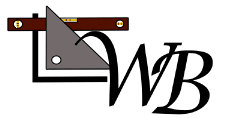What is the Comprehensive Shoreland Protection Act (CSPA)?
The CSPA (RSA 483-B) was originally enacted into law in the 1991 session of the Legislature. The act established minimum standards for the subdivision, use and development of the shorelands along the state’s larger waterbodies. In April and July of 2008, the act was amended and several changes took effect including limitations on impervious surfaces, new vegetation maintenance requirements and the establishment of a permit requirement for many, but not all, construction, excavation and filling activities within the protected shoreland.
Where is the protected shoreland located?
The protected shoreland extends 250 feet landward (horizontal surveyors line) from the reference line of protected waterbodies.
What activities require a shoreland permit?
New construction or construction that modifies the footprint of existing impervious surfaces on a lot within the protected shoreland, using mechanized equipment to either excavate, remove or form a cavity within the ground within the protected shoreland and filling any area within the protected shoreland with rocks, soil, gravel or sand requires a shoreland permit.
What are impervious surfaces?
Impervious surfaces are modified surfaces that cannot effectively absorb and infiltrate water. Examples of impervious surfaces include, but are not limited to, roofs, decks, patios, and paved, gravel, or crushed stone driveways, parking areas, and walkways unless designed to effectively absorb and infiltrate water. Exposed ledge on a property is not considered a modified surface and is not considered when calculating the total impervious area of a lot within the protected shoreland.
What activities DO NOT require a shoreland permit?
Many activities within the protected shoreland have been identified as not requiring a shoreland permit because the activity does not constitute construction, excavation or filling. These activities include, but are not limited to:
- Trimming, pruning, and thinning of branches to the extent necessary to protect structures, maintain clearances, and provide views.
- Maintenance of legal, existing, altered areas, such as mowing lawns, raking leaves and pine needles, mulching landscaped areas and haying fields.
- Planting one or more trees within existing altered areas more than 50 feet from the reference line with mechanized equipment.
- Planting of non-invasive vegetation and maintenance of existing gardens.
- Hand-pulling or use of hand tools to remove invasive species or other noxious or harmful plants such as poison ivy, including the root systems, provided that any area exceeding 10 square feet without vegetation be replanted with non-invasive, non-harmful species.
- Placement of stepping stones, provided no root systems are removed to accommodate their placement.
- Placement or installation of readily moved items such as picnic tables, lawn chairs, and swing sets.
- Construction or installation of fences using hand tools.
- Maintenance, repair or modification of an existing driveway, including repaving, provided that there is no increase in impervious area.
- Maintenance, repair or modification of an existing primary or accessory structure that does not:
- Alter the footprint or impervious area of the structure.
- For nonconforming structures erected prior to 1994 that do not meet the 50 foot primary structure setback, extend living space closer to public waters.
- Require, or result in, the alteration of previously unaltered areas.
- Require, or result in, any excavation or filling within the protected shoreland
- Exceed the criteria of the Shoreland Rule (Env-Wq 1405) associated with accessory structures.
- Modifications to an existing structure that minimally changes the outside dimensions of the structure, provided the work does not require excavation or filling such as installing a skylight or dormer or putting new siding over old siding.
- Installing private water facilities such as a well including the trenching associated with connecting the well to a residential dwelling.
- Forest management that is not associated with shoreland development or land conversion that is conducted in compliance with RSA 227-J:9.
- Forestry conducted by or under the direction of a water supplier for the purpose of managing a water supply watershed.
- Agricultural activities and operations defined in RSA 21:34-a and as governed by RSA 430.
- Digging test pits for the purposes of determining suitability for wastewater disposal under RSA 485-A:29 relating to subdivisions or septic systems, provided there is no disruption of groundcover within 50 feet of the shoreline and no test pits within 75 feet of the shoreline.
- Replacing utility poles or guy wires using mechanized equipment, provided that appropriate siltation and erosion controls are used and all temporary impacts are restored.
- Digging test pits for the purposes of determining suitability for wastewater disposal under RSA 485-A:29 relating to subdivisions or septic systems, provided:
- There is no disruption of groundcover within 50 feet of the reference line.
- No test pits are dug within 75 feet of the reference line unless required in order to evaluate eligibility for replacement under Env-Wq 1003.10.
Use of hand tools, such as augers or tile spades, to install monitoring wells, piesometers and flow meters , for:
- Evaluating site conditions as necessary for the submittal of information required by a permit application under RSA 482-A relating to wetlands, RSA 485-A:29 relating to subdivision of septic systems, or RSA 485-A:17 relating to alteration of terrain.
- Educational purposes.
- Monitoring hydrology.
Can I cut trees within the protected shoreland?
Yes, trees and saplings can be removed from the protected shoreland. Trees and saplings removed within 50 feet from the reference line may be removed in accordance with a grid and point system, and trees removed between 50 and 150 feet from the reference line must comply with the unaltered state requirement. There are no limitations on tree removal beyond 150 feet from the reference line.





